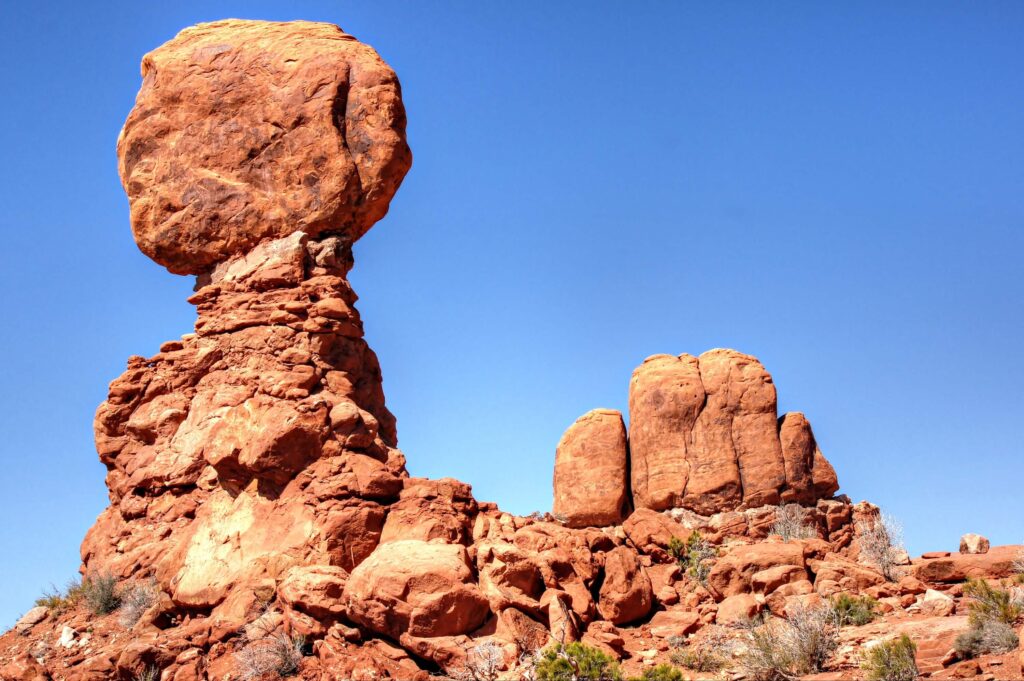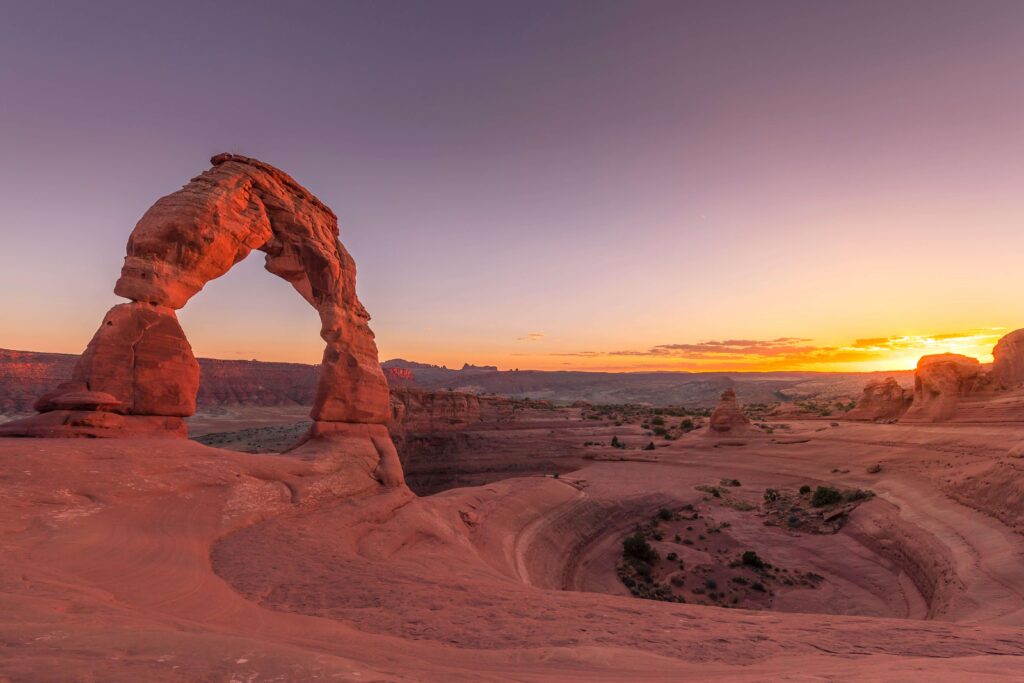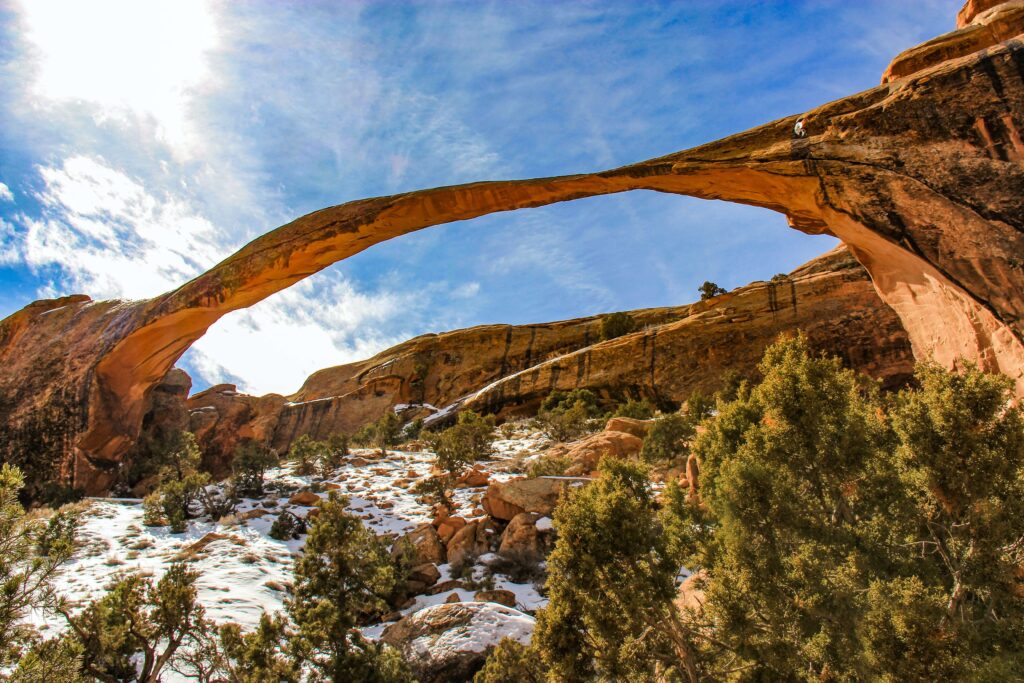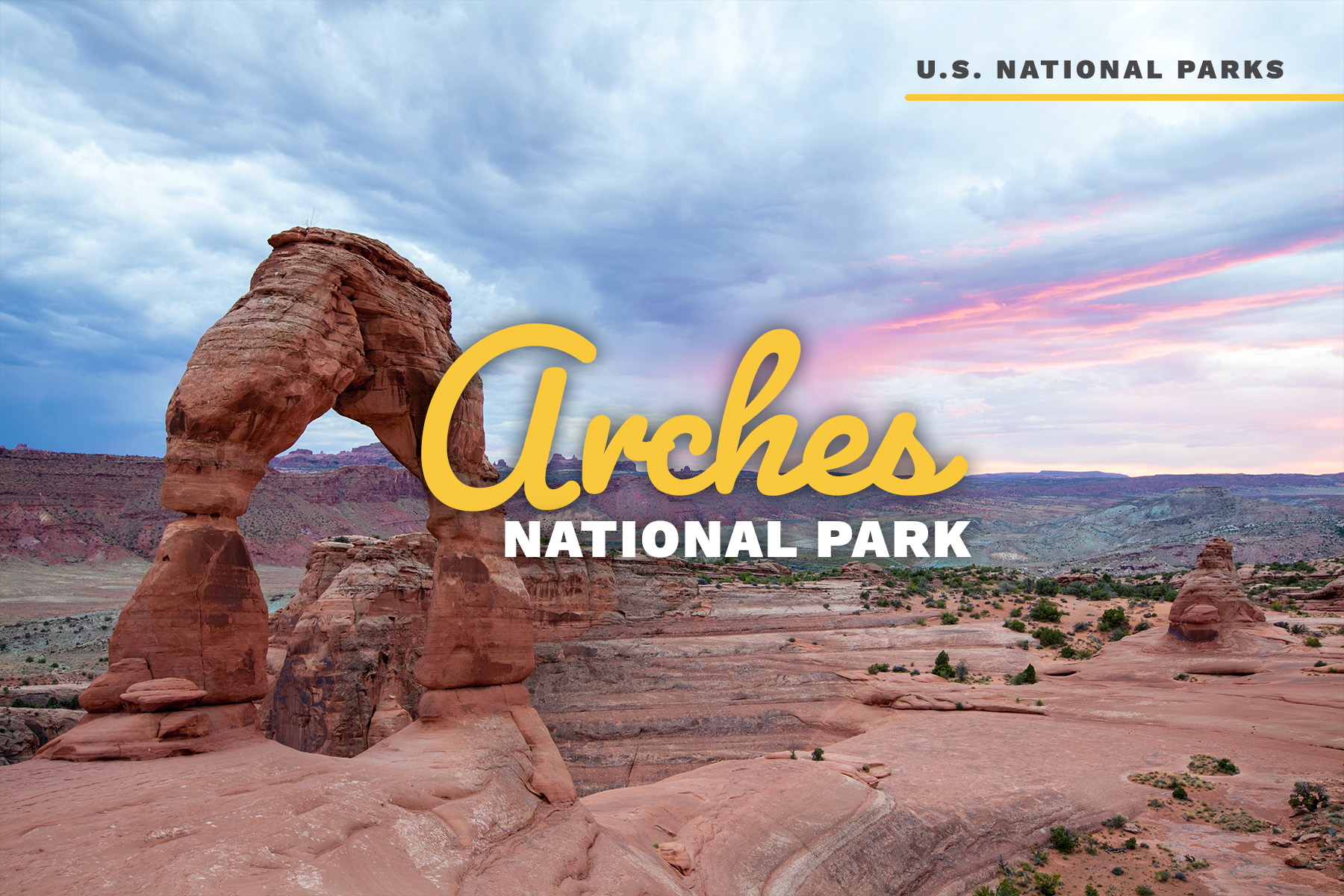Arches National Park enchants visitors through its beautiful arches, stunning sunsets, family-friendly hiking trails, and more. When visiting this national park be sure to take the scenic route, and drive down the beautiful Arches Scenic Drive. Need to get off the beaten path? Check out a guided 4×4 tour where you can look forward to seeing beautiful rock formations that seem to be defying gravity from a different new view. Arches is the perfect road trip destination for families and individuals of any age. If you are looking for travel inspiration on where to take your camper next, Arches National Park is an excellent choice!
Fast Facts
Arches Entrance Passes:
- For non-commercial, private vehicles, a 7-day pass costs $30 per vehicle with a 15-passenger capacity or less. Motorcycle passes are $25 for 7 days and if you are a bicyclist, hiker, or pedestrian you can purchase a per-person pass for $15.
- Visitors can also choose to purchase an annual pass for parks in southeast Utah for $55, which admits one private, non-commercial vehicle or the pass holder to Arches and Canyonlands National Parks, as well as Natural Bridges National Monument.
Best Time to Visit:
- The best time to plan a visit to Arches National Park is in the Spring from March to May, or in the Fall from September to October. This is primarily due to the desert weather of the park and visiting during the mildest temperatures.
How Many Days To Plan For:
- Planning to spend two days in Arches is ideal and gives you enough time to explore the Fiery Furnace and do a few more of the longer hikes. If you are sticking to shorter hiking trails and scenic overlooks, then one day is all you really need.
Where to Stay:
- There is so much to do and see in Arches National Park, so it is smart to book a hotel close to the park. Some of the great lodges and inns nearby include Bighorn Lodge, The Apache Motel, Gonzo Inn, Aarchway Inn, and Best Western Plus Canyonlands Inn.
Pet Policy:
- The activities allowed with pets are very limited at Arches National Park. Pets are not permitted on any hiking trailers and cannot be left unattended. However, you may have your pet with you in your campground and at pullouts along the paved scenic drives. Pets must also be leashed at all times whenever they are outside of your vehicle.
Park History
Arches National Park expands over 73,000 acres, roughly 114 square miles, and has more than 2,000 arches within its boundaries. This national park in southeastern Utah was originally designated a national monument in 1929 by President Herbert Hoover. In 1938 President Franklin Roosevelt expanded the grounds of the monument from 4,500 acres to nearly 34,000 acres. Although the number of tourists visiting the monument kept gradually increasing, the first paved road wasn’t added until 1958. In 1971 President Richard Nixon signed a law that changed Arches into a national park and set its size to the current 73,000 acres. The natural beauty of this national park is due to extreme climate changes that occurred millions of years ago, such as floods and excess debris sweeping the salt beds. Although this park is mainly desert, there is so much to see and so many amazing hiking trails to follow.
Park Highlights
- Take the scenic route. If you are just planning on traveling through the park, and not spending the night, be sure to check out the outstanding Arches Scenic Drive. There is one road that goes through Arches National Park and it is 19 miles long, from Highway 191 to the Devils Garden trailhead.
- View the natural wonder of sandstone arches. Arches National Park has over 2,000 natural sandstone arches, and the most famous one is Delicate Arch. This arch can be seen from several parts of the park, but the trail to the arch starts at Wolfe Ranch, through Slick-rock, and up to the arch itself. You can also choose to drive up to the viewpoint of the arch if you are unable to make the hike.
- Take a peek through the windows at the landscape. This 1-mile round trip hike at the Windows will bring you close to three different arches, Turret Arch, South Window, and North Window. When seen together, the North and South Windows look like a giant pair of glasses that were left laying in the desert. The Turret Arch has a portion of rock that reaches for the sky like it is at the top of a tower.
- It’s all a balancing act. Arches National Park is full of beautiful rock formations, but did you know that it is also well-known for one that is not an arch? To the eye, Balanced Rock looks like a large boulder delicately balancing on the top of a rock pillar. It really is just one big rock formation, but it leads our minds to wonder if it actually is balancing there!
- Take the road less traveled. If you are looking for a new way to explore Arches National Park, go off the beaten path on a guided 4×4 tour! This highly-rated tour is 4 hours long and takes you to incredible locations throughout the park that tourists rarely get to see. There is also a tour that combines two national parks in one day, Arches National Park and Canyonlands National Park.
Things To Do
Devil’s Garden
Devil’s Garden is one of the premier locations in Arches National Park and has a large concentration of narrow rock walls, arches, spires, and more. These narrow rock walls, also known as fins, eventually erode and create arches like Landscape Arch, which is the crown jewel of Devil’s Garden. Devil’s Garden offers visitors breathtaking views, backpacking, stargazing, camping, and hiking trails for all skill levels. This wondrous place is located at the very end of the park’s main road, about 18 miles north of the Arches National Park Visitor Center. The Devils Garden Campground is also available by reservation from March through October, and open on a first-come, first-served basis throughout the winter months.
Fiery Furnace
The Fiery Furnace is a collection of narrow sandstone canyons, natural arches, and fins near the center of Arches National Park. This area of the park was given its name due to the reddish hue it has during sunset. This hike is best done with a ranger leading the way. You can get an individual permit, but those are limited on a first-come, first-served basis. Reservations for this hike are required and the tickets are in high demand, so be sure to check online frequently for your best chance at getting a reservation to hike the Fiery Furnace. This hike has challenging terrain, and once you enter the Fiery Furnace, you must complete the hike due to the maze-like terrain. For more information on the Fiery Furnace Hike and ranger-led tours, please visit the Arches National Park website today.
Garden of Eden
The Garden of Eden in Arches National Park is located near Moab, Utah, and has no designated trailheads. This means that visitors can explore this open hiking area and discover the various geological structures within like Serpentine Arch and Owl Rock. From the parking area, you can see the gap between Adam and Eve and the Devil’s Golf Ball. The gentle climb up to this area gives you the opportunity to explore the central area of the garden. Once you are in the center, you can see Serpentine Arch, which is the arch with the largest opening in the garden. If you want to see the Garden of Eden for yourself, all you have to do is climb out of the car and take a hike!

Hiking Trails
Although several of the hiking trails are short at Arches National Parks, it means that you and your family can enjoy exploring together. From viewing beautiful landscapes to watching magnificent sunsets through the arches, these hiking trails can lead you to several wonderful places. Before heading out on the trails, be sure to check if you need any permits as you do for the Fiery Furnace Hike!
Best Hikes in Arches National Park:
- Park Avenue (2 miles)
- Delicate Arch (3 miles)
- Windows Viewpoint Trail (1.2 miles)
- Double Arch (0.6 miles)
- Fiery Furnace Overlook & Hike (2.3 miles)
- Devil’s Garden Hike & Landscape Arch (7.2 miles)
- Balanced Rock Hike (0.3 miles)
- Sand Dune Arch (0.4 miles)
Other Notable Arches
This national park is full of beautiful and notable arches, including Double Arch, Landscape Arch, and Sand Dune Arch. Double Arch is a pair of arches that are closely set together and is one of the most well-known features of Arches National Park. These arches lie within the Windows area of the park, which is where the largest concentration of natural arches occurs. Landscape Arch is located in Devil’s Garden and is the longest arch in North America with an opening of 306 feet. This arch is also only 6 feet in diameter at its narrowest point, which means it is extremely delicate and holding on by a thread. To get to Sand Dune Arch, you have to hike through deep sand and find it hidden between tall sandstone walls. This 0.4-mile hike will take you through narrow canals and sandstone fins to a small area with a magnificent hidden arch.



